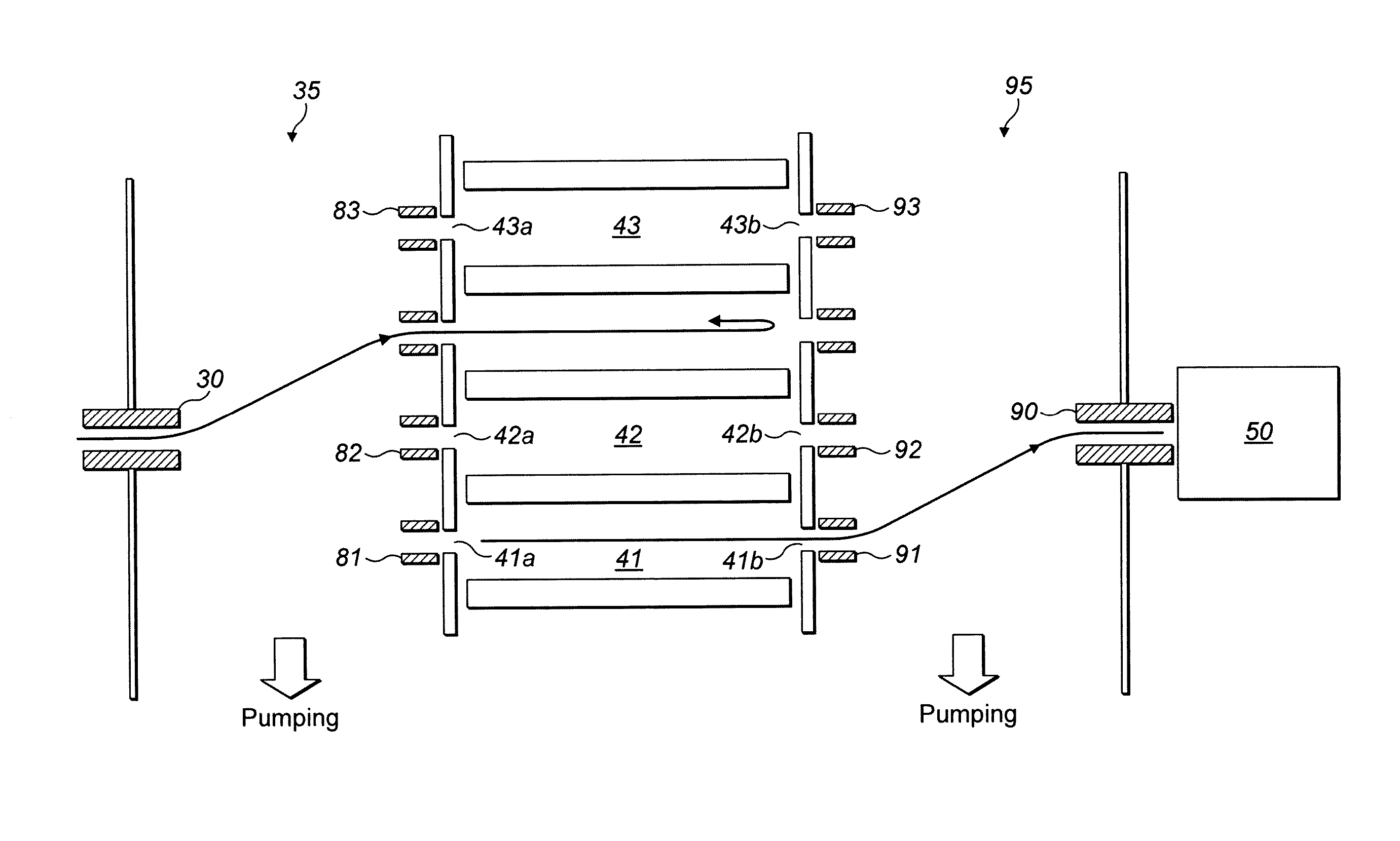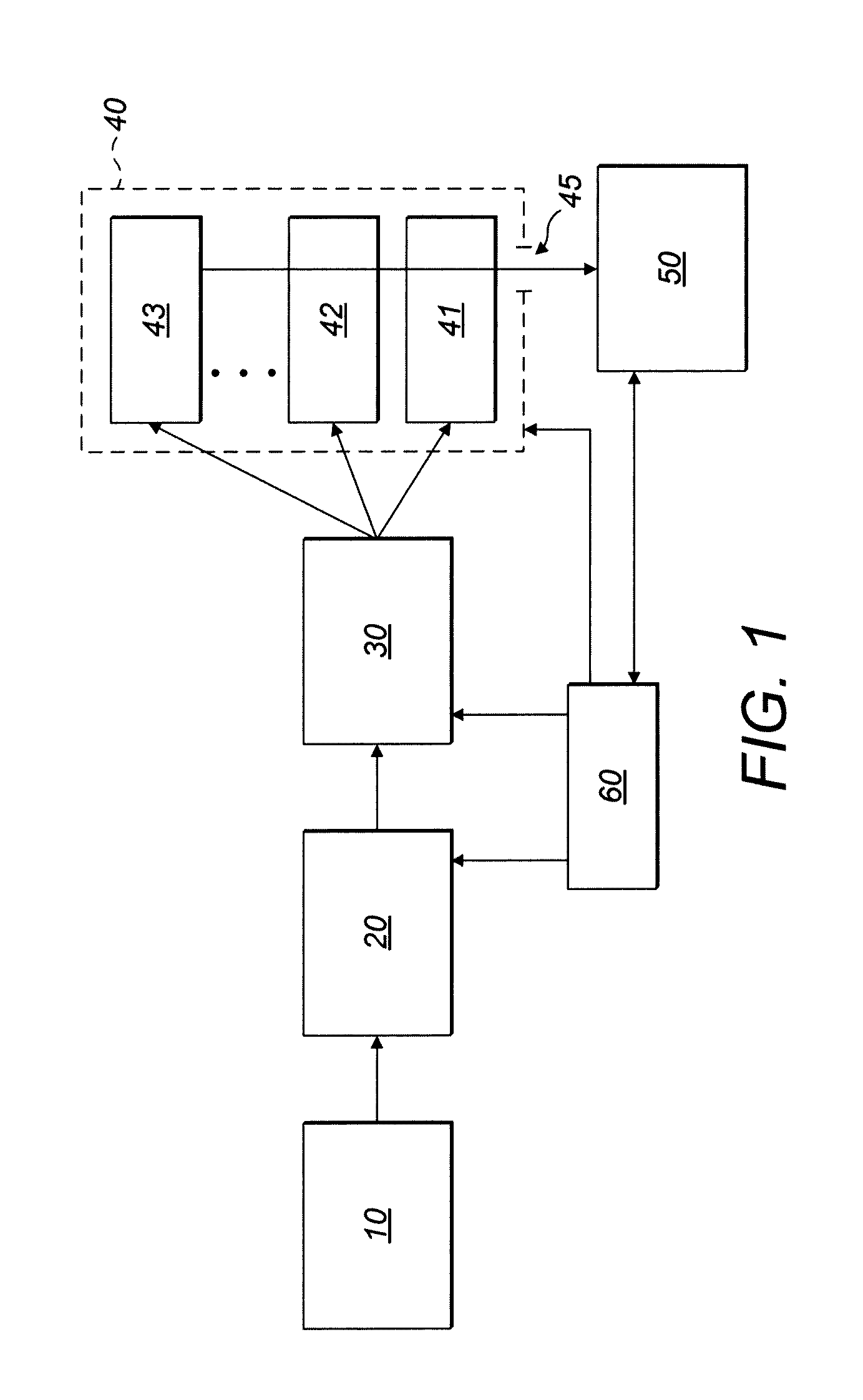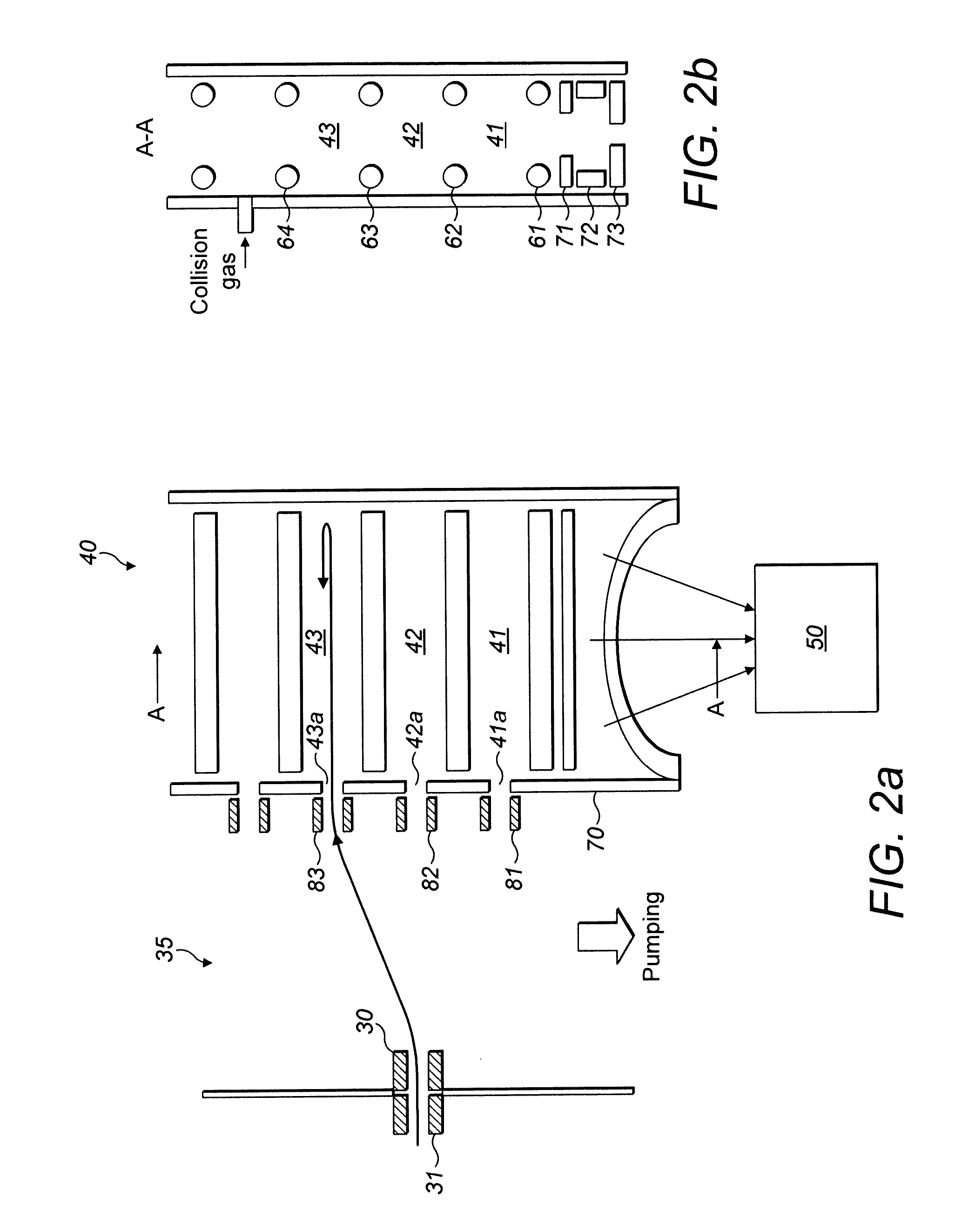Collision cell for tandem mass spectrometry
a tandem mass spectrometer and collision cell technology, applied in mass spectrometers, time-of-flight spectrometers, particle separator tube details, etc., can solve the problems of insufficient time to achieve a good signal-to-noise ratio for each precursor, insufficient time for traditional methods inherently lacking dynamic range, and difficult identification. , to achieve the effect of high performance analysis, sufficient time and sufficient tim
- Summary
- Abstract
- Description
- Claims
- Application Information
AI Technical Summary
Benefits of technology
Problems solved by technology
Method used
Image
Examples
Embodiment Construction
[0027]Referring first to FIG. 1, a highly schematic block diagram of the components for a tandem mass spectrometer embodying the present invention is shown. The embodiment of FIG. 1 may be referred to herein as being of a “conveyor-type”. In the arrangement of FIG. 1, ions are introduced from an ion source 10 into a first stage of mass analysis 20. The ion source 10 may be continuous, quasi continuous (such as, for example, an electrospray ionisation source) or pulsed such as a MALDI source. In FIG. 1, ion optics and various other components necessary for transporting ions between various stages of the tandem mass spectrometer are not shown, for clarity, though these will in any event be familiar to the skilled person.
[0028]The first stage of mass analysis 20 may be one of an ion trap, such as a linear ion trap with radial or axial ejection, a time of flight (TOF) analyser of any known type, including but not limited to multi-turn and multi-reflection TOFs, an ion mobility spectrome...
PUM
 Login to View More
Login to View More Abstract
Description
Claims
Application Information
 Login to View More
Login to View More - R&D
- Intellectual Property
- Life Sciences
- Materials
- Tech Scout
- Unparalleled Data Quality
- Higher Quality Content
- 60% Fewer Hallucinations
Browse by: Latest US Patents, China's latest patents, Technical Efficacy Thesaurus, Application Domain, Technology Topic, Popular Technical Reports.
© 2025 PatSnap. All rights reserved.Legal|Privacy policy|Modern Slavery Act Transparency Statement|Sitemap|About US| Contact US: help@patsnap.com



